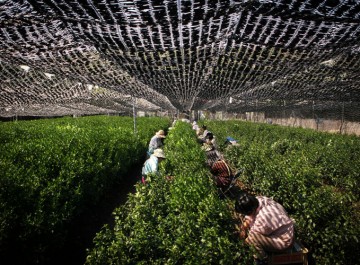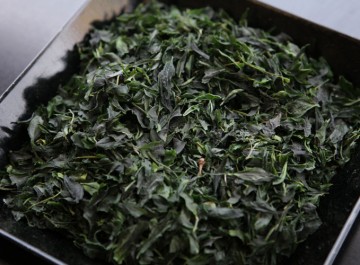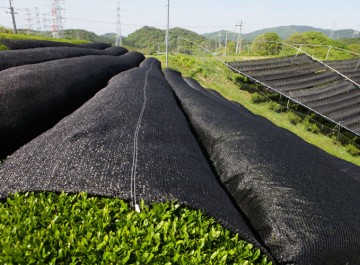In order to understand the tea market, one must understand tea supply and tea demand. Green Tea is produced all over Japan, amounting to roughly 860,000 tons per year. This is roughly 4% of tea produced globally. However, there are only 4 localities that are known for their quality and quantity. Uji (Kyoto), Shizuoka, Yame (Fukuoka), and Kagoshima. Shizuoka, and Kagoshima, are both well known for their Sencha, and for the sheer amount of tea they produce. Yame is known for its high quality Sencha and Gyokuro. Uji (Kyoto), is known not only for their high quality Sencha, but is known for the highest quality Matcha in Japan, and its outstanding Gyokuro. Uji, Kyoto is also where Japanese tea was “born” over 800 years ago, and Sencha, Gyokuro, and Matcha, all originated from Uji and Kyoto.
Most tea available to the market, wherever you are, is gathered by the local tea unions or sold from the tea farms to the tea blenders and wholesalers, which then blend the tea and sell the blends to various resellers, who sell them to teashops, beverage companies, or retailers.
This system, although common amongst all farm products, works especially well with regular, or common green tea. This is true especially if your farm does not produce above average tea or if you are talking price and quantity over quality. Often, as a result of this, common tealeaves from all over Japan are mixed and blended, then branded; in order to produce the “Japanese tea” that many see in the market today.
But when it comes to high quality Matcha, Gyokuro, or Sencha it becomes a different story. Each tea is branded by its locality, and quite often is limited in supply (especially for wide distribution).

For example, lets take a look at Gyokuro. Just as the first shoots of the year start to show, the whole plantation is “shaded”, blocking the sun, for an absolute minimum of 20 days. Covering all the tealeaves is not an easy task, and must be done just right to get the desired effect. Discounting all of the “fake” Gyokuro that somehow finds the way into the market, less than 300 tons (277t based on data from 2007 *1) of actual Gyokuro is produced per year, and the amount will not go up any time soon. Why? The number of Gyokuro farmers are dwindling due to the cost and extra effort that is required in order to make the tea.
If you divide the 277 tons of Gyokuro by the population of Japan, you would end up with 2.2 grams of Gyokuro per person. Considering it takes 10 grams to make a pot for 3, and 4 to 5 grams to make a cup for 1, this means that even if everyone wanted just a single cup of Gyokuro tea per year, only half the population of Japan would be able to get a taste of Gyokuro.
As for Matcha, not only does it require tea made at the same if not stricter standards than Gyokuro, but then comes the process of making the fine powder. The leaves are dried in a special way and made into what is known as Tencha (see picture below). Once the Tencha is made, then the leaves are separated from the stems and veins. Then comes the “long grind” in which only the leaf is used. Even utilizing an automated stone mill to grind the Tencha into a fine Matcha, you can only produce a maximum of 40 grams of Matcha per hour per mill. One of the biggest tea refineries in Uji runs 100 mills, 10 for each blend, producing a total maximum of 40kg of Matcha per day.
In short, Good Matcha, is in very limited supply.
Due to its high demand domestically, and because of the current international demand for Matcha, you often find “commercial grade cooking Matcha” sold as cheap affordable “House Matcha” in the international market. While cooking Matcha is great for cooking, baking, and making Matcha Latte’s with a lot of sugar and cream to cover its bitterness and the lack of over all flavor, it would be like selling SPAM or corned beef, while advertising it as a Kobe beef.

Thus, before these teas even reach the public market, the high quality teas are often sold off to long time customers such as restaurants, high-class department stores, and specialty tea resellers. What is left over goes to the highest bidder.
The middle grade tea is also sold off to the tea merchants, wholesales, and some of it gets exported.
The lower grade tea, the most common of all teas, you will find in the supermarkets, and in the pre-made tea-beverages.
Traditionally speaking, good green tea was also hard to store for long periods of time without proper temperature control. Which is why, in the past it was difficult to export good Japanese tea in a perfect condition.
This is why good Japanese tea is hard to come by, and why we at Matabay chose to “cut the red tape” and make the “good stuff” available and affordable to tea lovers across the world, even if the supply may be limited.
Note: *1 – Starting 2008, the tea union of Mie prefecture claims that they make over 133 tons of Gyokuro per year, however the process is shorter (12 days, with the shade wrapped directly onto the tea tree), and would only be classified as “Kabuse tea” in any other prefecture. This is a point of conflict that remains unresolved.








